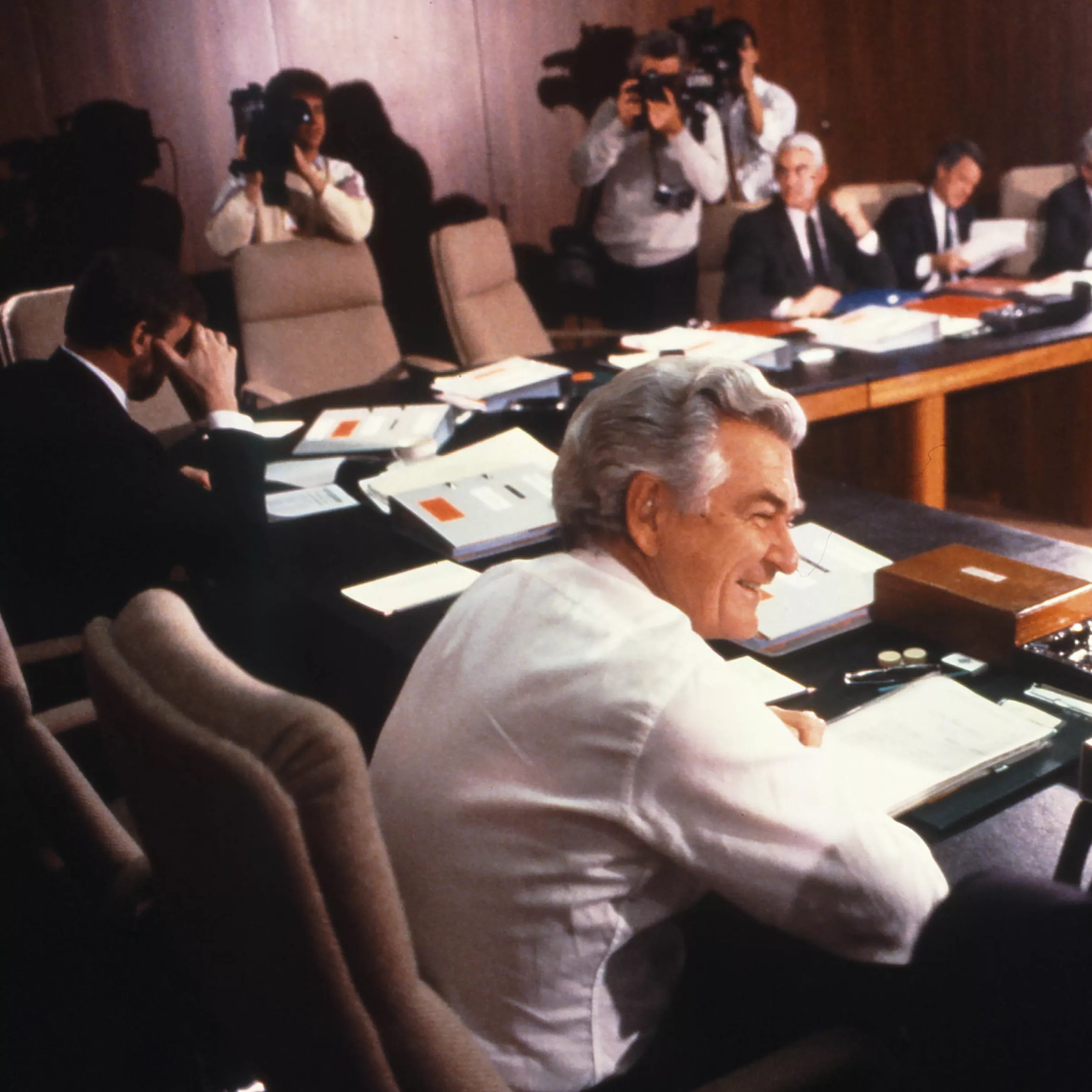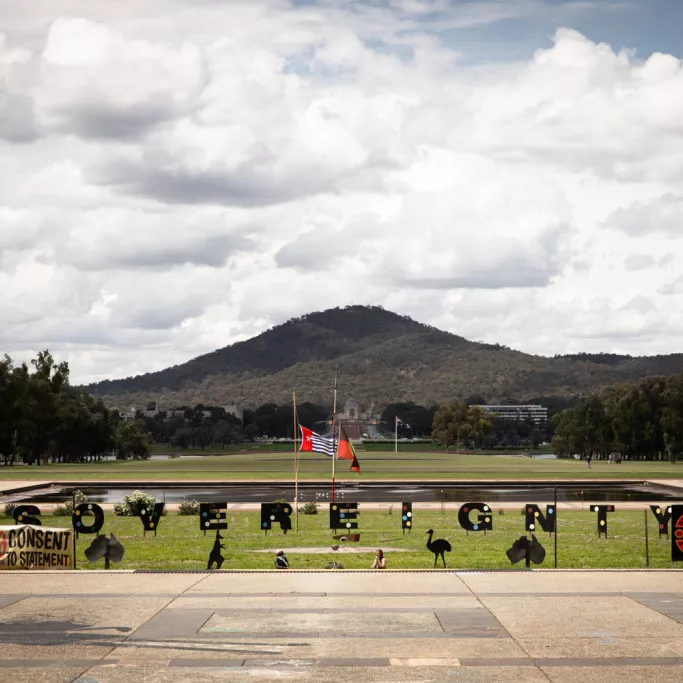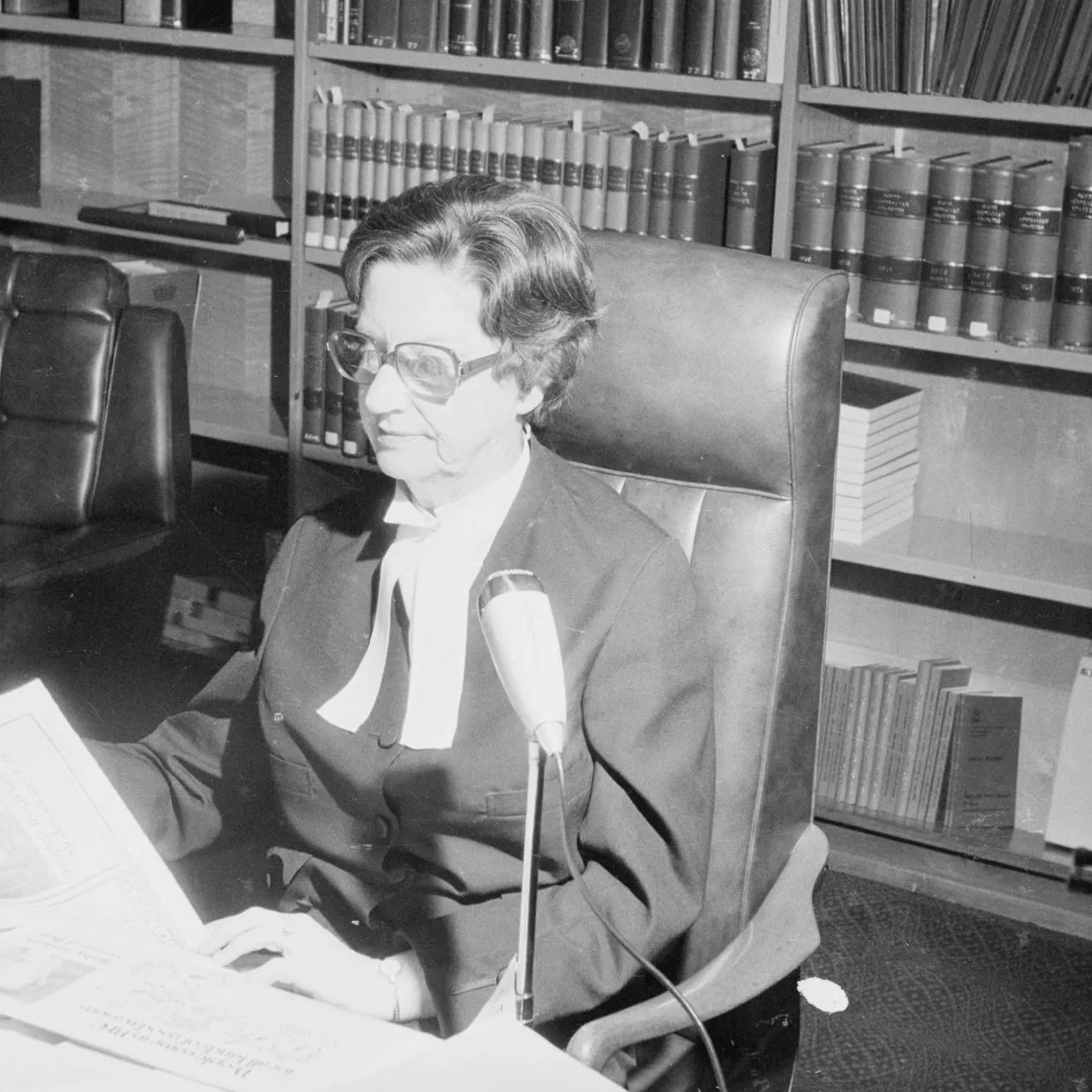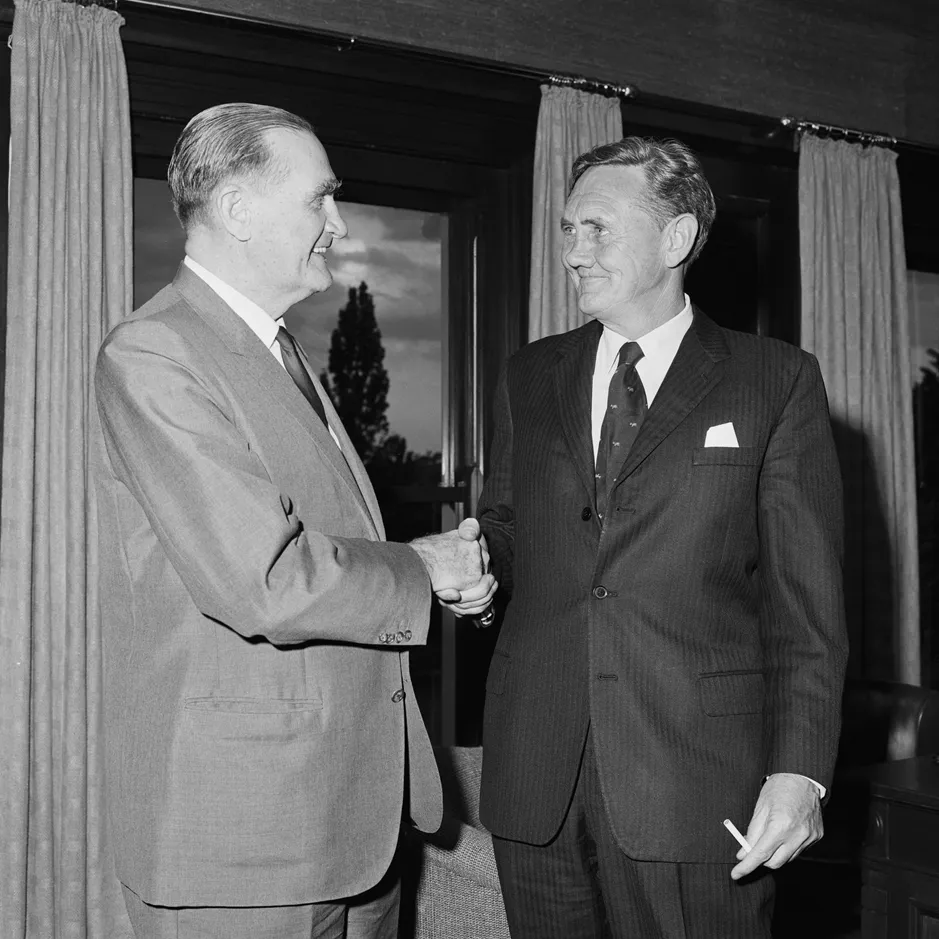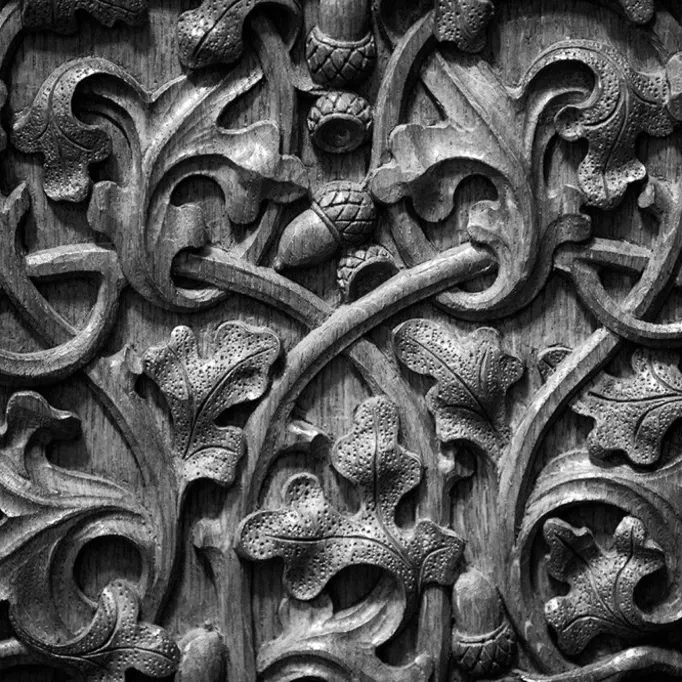Reflections of Bob Hawke in Old Parliament House
- DateThu, 04 Jun 2020
As Prime Minister, Bob Hawke served five years in the Old Parliament House and three in the new.
Was he or anyone on his staff sad to leave the cramped, crowded, noisy, stuffy, threadbare old Prime Minister’s Office for the vast and elegant spaces in the new?
Hawke himself was delighted to be the incumbent who made the historic transition from the old to the new.
But I think we all missed the immediacy, efficiency, and dignified modesty of the Old Parliament House. I traded up, from sharing the speechwriter’s broom closet to occupying a whole office to myself. But I missed how the Old Parliament House seemed tailor-made for Hawke’s democratic style.
On some mornings coming in from the Lodge, he would be dropped off at the main entrance and spring up the stairs, delivering some doorstop wisdom to the journos, and dazzling the assorted families and school tour groups in King’s Hall with a burst of high voltage charisma, before bounding off down to the PMO.
There, he would not use the formal corridor past the Cabinet anteroom, but stride through the general office and down the staff corridor, greeting us all. Such energy and access couldn’t happen in the new parliament house; it seemed sterile and corporate by comparison.
Most people only saw the public Bob Hawke, campaigning in shopping malls and spruiking his message on TV. We had the privilege and joy of seeing the other half of the political leader, hard at work here behind his desk.
Cigar in hand, Hawke was intellectually disciplined, focussed and energetic – reading, quizzing a group of ministers or advisers, or meeting with a foreign leader. (At these times you could get a tiny fish-eyed view of the Prime Minister by peering through the peephole from the Principal Private Secretary’s office - another attractive feature of the old PMO that did not make the transition to the new).
On our last day in the Old Parliament House, the entire staff – stenos, drivers, attendants, coppers, advisers, press secretaries, and Ozzie Meneghello the Cabinet butler – crowded in to the inner sanctum, Hawke’s actual office, and sat on and around his desk for a photo.
The Old Parliament House of course also provided the setting for Bob Hawke’s greatest single-handed triumph of his Prime Ministership – the National Economic Summit, convened and chaired by him over four days in April 1983.
The truth is that Hawke had less regard for the Parliamentary side of the job than most Prime Ministers. Unlike Gough Whitlam or Paul Keating, he had not spent a lifetime as a parliamentarian, mastering the procedures, building his political program and strutting his stuff in question time.
He had risen outside Parliament, and had exercised more real power in the trade union movement - and generated more media attention than most elected MPs.
But when it came to convening the Summit - a major election campaign promise, the leading item on his economic reform agenda, and the embodiment of his signature ‘consensus’ approach to political leadership – he moved immediately to open the doors of the House of Representatives for the purpose.
In his autobiography he records various unnamed ‘conformists’ telling him at the time: ‘You can’t have it in the Chamber, Prime Minister’ … ‘It’s not done, it has never been done.’
I wasn’t on Hawke’s staff at the time. But I do know from my later experience that arguments about something being ‘unprecedented’ carried very little weight with him.
He was in fact, a very willing breaker of convention and culler of sacred cows. He embraced unorthodoxy as a political leader, not out of cussedness or whim, but because he aimed to reconfigure national politics along the lines of his 1983 election campaign promise: ‘Reconciliation, Recovery and Reconstruction’.
So having led the Labor Party to electoral victory on 5 March 1983, the new Prime Minister issued invitations on 11 March to nearly 100 men and women - trade union leaders, business CEOs, leaders of churches and welfare groups, along with federal, state and local government leaders - to come to Canberra as delegates, and to participate in an unprecedented discussion about the nation’s economic, industrial, fiscal and investment future.
The Summit opened on 11 April. Hawke’s opening speech as chairman was thus his first as Prime Minister in the Reps chamber – delivered not in a Parliamentary session or to elected members of parliament, but to a broader national audience of sectoral representatives.
In his speech, Hawke, the twelfth PM in the Old Parliament House, recalled the seventh – his hero, John Curtin. Hawke’s sense of identification with Curtin was deep and emotional. Convening the Summit in the Chamber in which Curtin had directed the war effort added force to Hawke’s conviction that the crisis facing the country in the 1980s was comparable with that of the 1940s - and that it required a similarly united national approach, under Labor leadership, to overcome.
Against many expectations – not his own of course; he declared it a success on the first morning - Hawke’s Summit was a triumph. It did achieve consensus, despite it being the first time that many of the business titans had met real trade unionists, and vice versa. It cemented the Labor - union Accord as the centrepiece of the nation’s economic policy for the 1980s, delivering wage restraint in a very Hawke-style negotiated trade-off for increased social spending. And it laid the foundations, economic and electoral, of the most successful and effective Labor reform governments that we have seen.
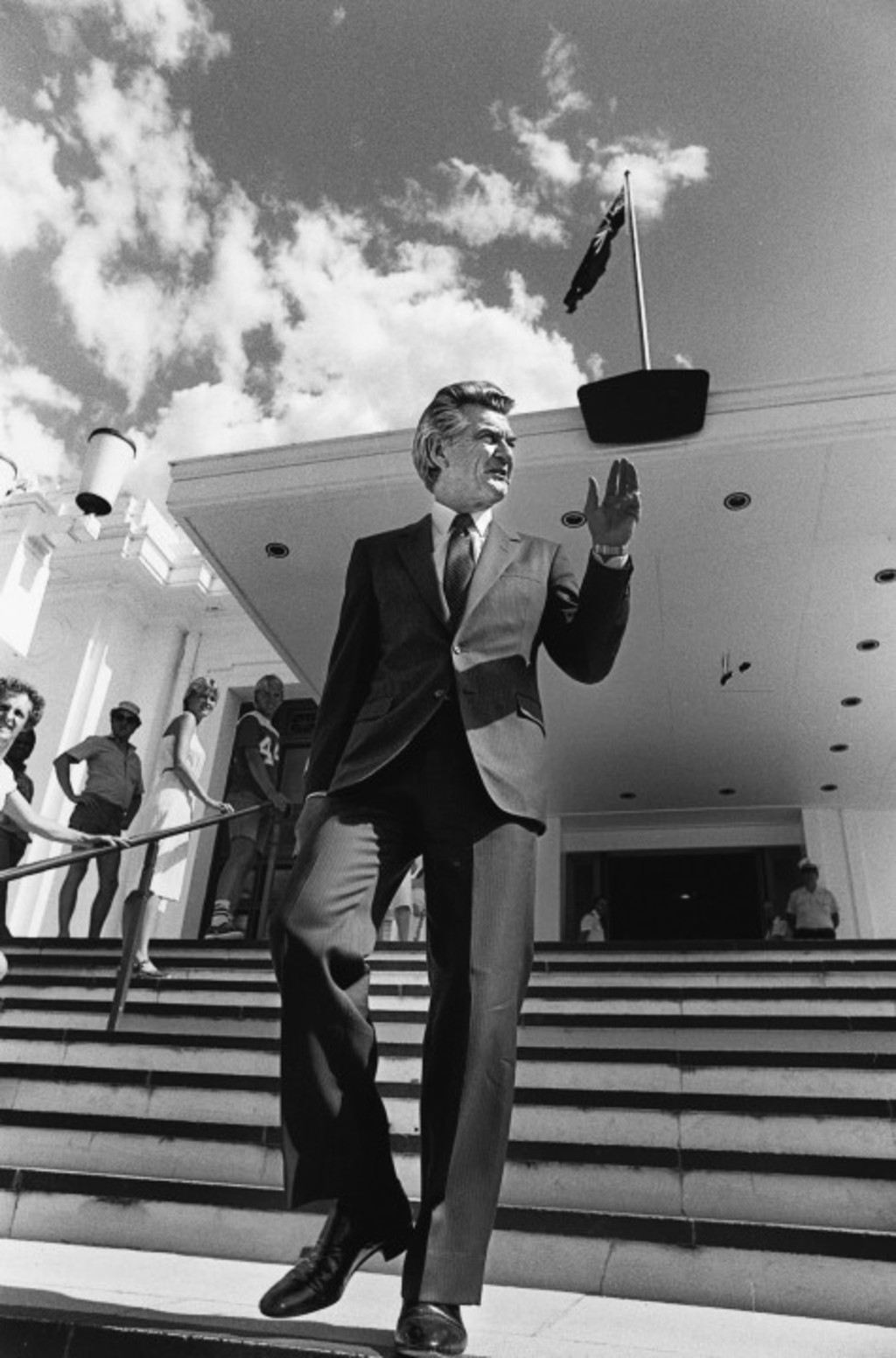
Credit: Michael Rayner/Fairfax Syndication
A buoyant Prime Minister-elect Bob Hawke acknowledges well-wishers on the steps of Parliament House on 7 March 1983.

